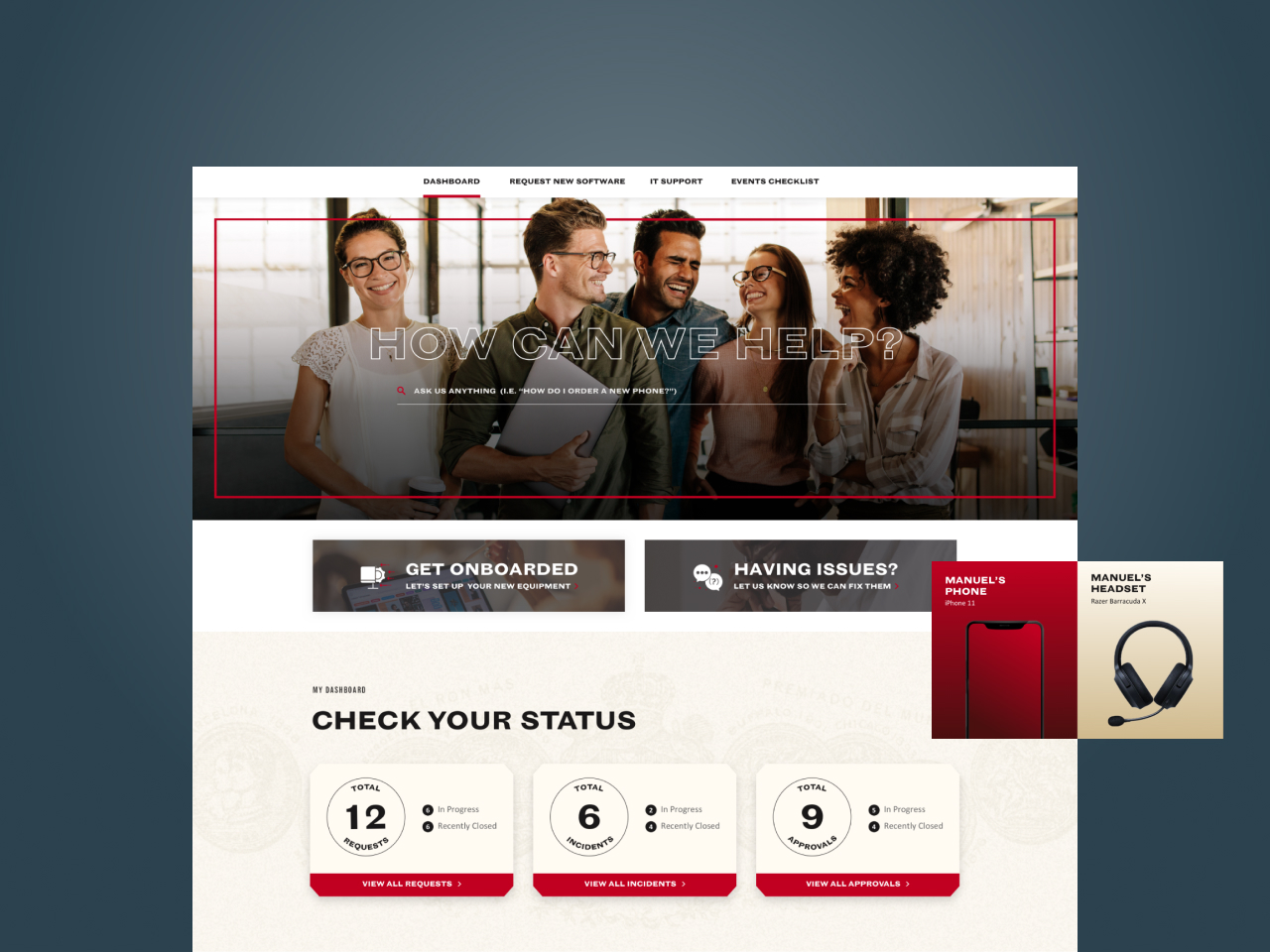In response to the shift towards remote work brought on by the COVID-19 pandemic, this international spirits company recognized the need to re-evaluate critical processes their employees relied upon. The current technology support organization and operating model had limited self-service capabilities and lacked standardization with global business processes—hindering their goal to provide a consistent and effective IT service for employees. They needed help applying technology in a way that would manage employee services previously offered through face-to-face interactions, regardless of their employees’ location.
To gain a holistic understanding of their current IT service experience, Veracity began by defining best practices and identifying key user personas through stakeholder interviews and organizational surveys. Our team then developed a future-state vision that included updates to taxonomy, user interface, processes, and platform support—culminating in a comprehensive roadmap outlining near and long-term steps towards a seamless service management vision. To empower the organization and deliver top-of-the-line employee experiences, we curated recommendations to reimagine delivery of IT employee services for both short and long-term processes.
Veracity empowered a top-of-the-line employee experience through a comprehensive roadmap for a reimagined IT Service Experience.


